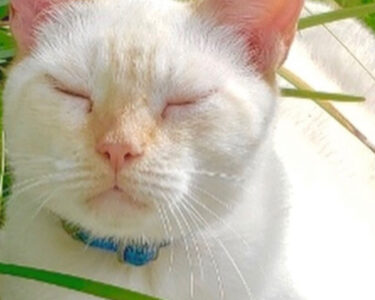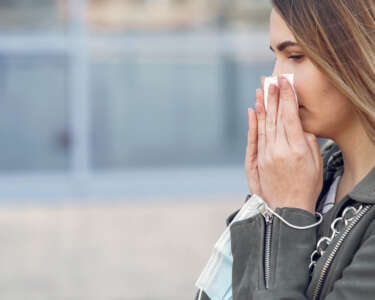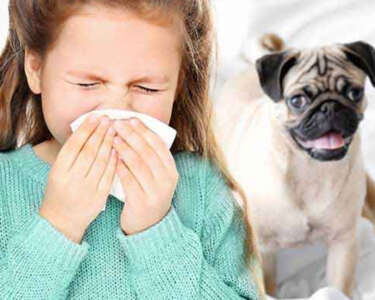For over two months now, we’ve all been practicing basic measures to prevent possible contamination with the new coronavirus-2. We all have had to adapt to the new routine of wearing masks in public, regularly washing our hands, and keeping a safe distance from other people. However, when it comes to animals, there are a few misunderstandings and incorrect assumptions on how to keep them safe. Even though Cov-2 is a human virus, there are a few (less than ten) documented reports around the world of cats and dogs testing positive for the virus. These pets had few or no symptoms and are doing well. It is believed that all of them were infected by humans or by contact with a contaminated surface. In addition, a recent study demonstrated that cats carrying the virus can infect other cats. We are learning new facts about this new coronavirus every day. Let’s avoid these common mistakes and minimize the possible infection of our pets.
- Do not disinfect your pet’s fur with chlorine, alcohol or other disinfectants. These can be highly toxic to them. A soap and water bath is enough. Keep in mind that the animal’s fur is porous, so it’s not an effective surface for the virus to survive and infect others. Also, avoid cleaning the bottom of their paws with chlorine or Lysol wipes. Your pets can lick it and intoxicate themselves. When returning from a walk, cleaning your pet’s paws with baby wipes or a damp towel with soap and water is enough.
- Do not place a mask on your dog or cat. It could affect respiration and will certainly stress them out.
- Do not allow your dog or cat to lick your hands after using hand sanitizers. The latter contains ethanol, the same alcohol found in beer and wine. Your pets could lose their balance and coordination. If enough is ingested, your pet could become severely intoxicated, requiring medical treatment.
- When going for a walk, always use a short leash and keep your dog six feet away from dogs and people that do not live in your household. Even if your dog has a playtime buddy, it is recommended to be cautious and avoid contact for now. This is an important recommendation by the Center for Disease Control (CDC).
- Do not take your dog for walks at public places such as dog parks. A nice walk around your neighborhood is safer.
- Do not allow your cat to go outside (if possible). One of the cats that tested positive for CoV-2 was from New York and is thought to have been infected by a contaminated surface outside the home.
- Do not neglect your pets’ accessories. Is important to wash food bowls and toys with soap and water frequently.
- If you test positive for COVID-19, do not not hug, kiss or sleep with your pet. Instead, have someone else in the household take care of them. If there is no one available to help out, wear a mask when you’re near your pets and wash your hands before and after interacting with them.
- Do not request the canine coronavirus vaccine to protect your dog from CoV-2. This vaccine, which has been available for decades, protects your dog from a different strain of coronavirus that produces only mild gastrointestinal symptoms.
- Do not request the veterinary CoV-2 test for your dog and cat if they are healthy. This is not a routine test and will only be performed if your pet shows respiratory signs and is negative for the most common canine and feline respiratory pathogens.
Most importantly, do not abandon your dog and cat on the streets or at a shelter. With over 4 million humans infected world-wide, there hasn’t been even one documented report of a person infected from a dog or a cat. It is a known fact that having a pet close by during this pandemic can provide relaxation and peace to anxious, stressed owners. Let’s keep our pets safe by avoiding the spread of erroneous beliefs about their care.









 Deering Estate
Deering Estate
 Massage Envy South Miami
Massage Envy South Miami
 Calla Blow Dry
Calla Blow Dry
 My Derma Clinic
My Derma Clinic
 Sushi Maki
Sushi Maki
 Sports Grill
Sports Grill
 The Healthy Kitchen
The Healthy Kitchen
 Golden Rule Seafood
Golden Rule Seafood
 Malanga Cuban Café
Malanga Cuban Café

 Kathleen Ballard
Kathleen Ballard
 Panter, Panter & Sampedro
Panter, Panter & Sampedro
 Vintage Liquors
Vintage Liquors
 The Dog from Ipanema
The Dog from Ipanema
 Rubinstein Family Chiropractic
Rubinstein Family Chiropractic
 Your Pet’s Best
Your Pet’s Best
 Indigo Republic
Indigo Republic




 ATR Luxury Homes
ATR Luxury Homes


 2112 Design Studio
2112 Design Studio
 Hamilton Fox & Company
Hamilton Fox & Company
 Creative Design Services
Creative Design Services
 Best Pest Professionals
Best Pest Professionals
 HD Tree Services
HD Tree Services
 Trinity Air Conditioning Company
Trinity Air Conditioning Company
 Cisca Construction & Development
Cisca Construction & Development
 Mosquito Joe
Mosquito Joe
 Cutler Bay Solar Solutions
Cutler Bay Solar Solutions


 Miami Royal Ballet & Dance
Miami Royal Ballet & Dance
 Christopher Columbus
Christopher Columbus
 Pineview Preschools
Pineview Preschools
 Westminster
Westminster
 Carrollton
Carrollton
 Lil’ Jungle
Lil’ Jungle
 Frost Science Museum
Frost Science Museum
 Palmer Trinity School
Palmer Trinity School
 South Florida Music
South Florida Music
 Pinecrest Orthodontics
Pinecrest Orthodontics
 Dr. Bob Pediatric Dentist
Dr. Bob Pediatric Dentist
 d.pediatrics
d.pediatrics
 South Miami Women’s Health
South Miami Women’s Health

 The Spot Barbershop
The Spot Barbershop
 My Derma Clinic
My Derma Clinic




 Miami Dance Project
Miami Dance Project

 Rubinstein Family Chiropractic
Rubinstein Family Chiropractic
 Indigo Republic
Indigo Republic

 Safes Universe
Safes Universe
 Vintage Liquors
Vintage Liquors
 Evenings Delight
Evenings Delight





 Atchana’s Homegrown Thai
Atchana’s Homegrown Thai
 Baptist Health South Florida
Baptist Health South Florida

 Laser Eye Center of Miami
Laser Eye Center of Miami
 Visiting Angels
Visiting Angels
 OpusCare of South Florida
OpusCare of South Florida

 Your Pet’s Best
Your Pet’s Best





 HD Tree Services
HD Tree Services
 Hamilton Fox & Company
Hamilton Fox & Company


 Creative Design Services
Creative Design Services